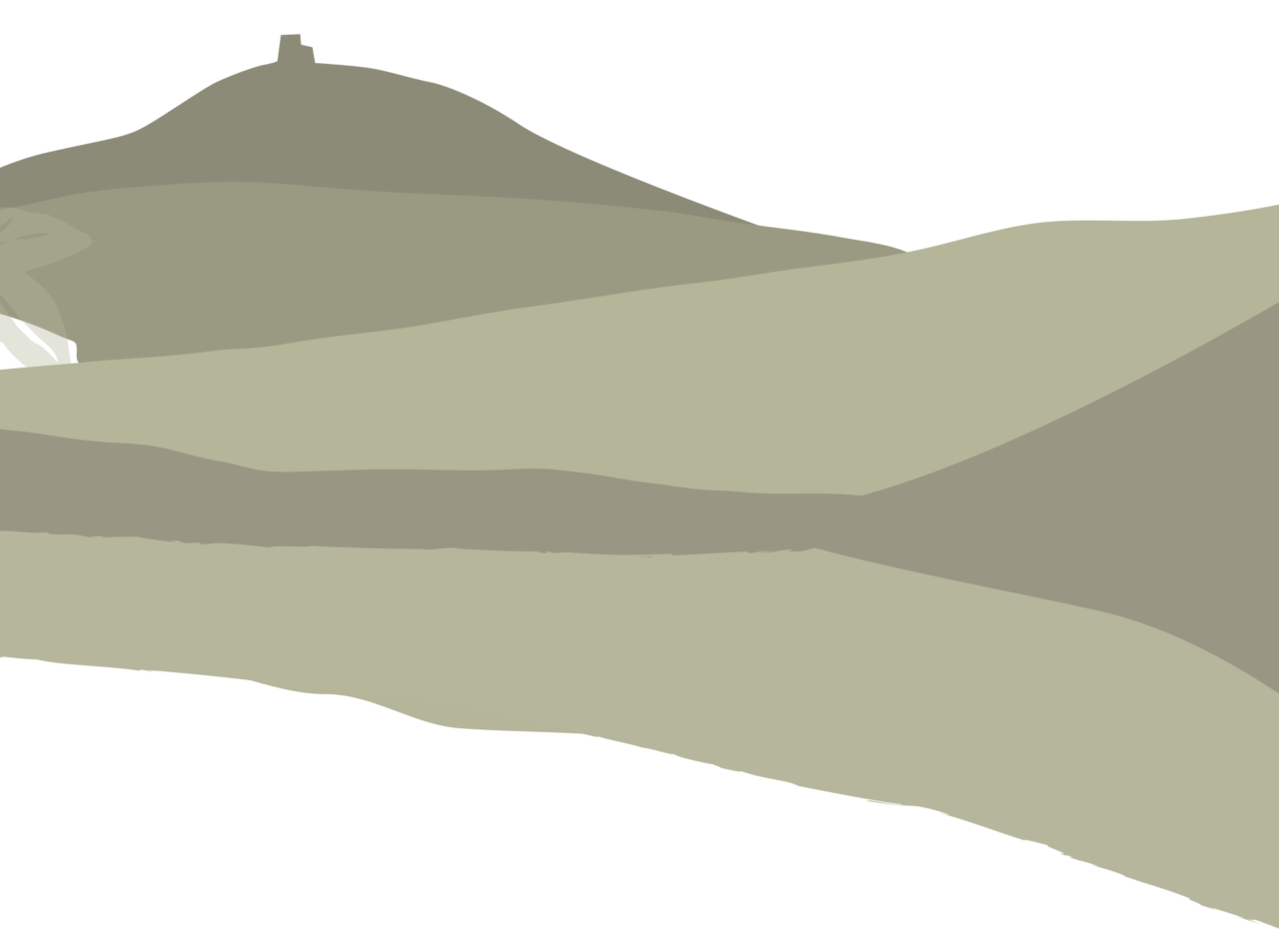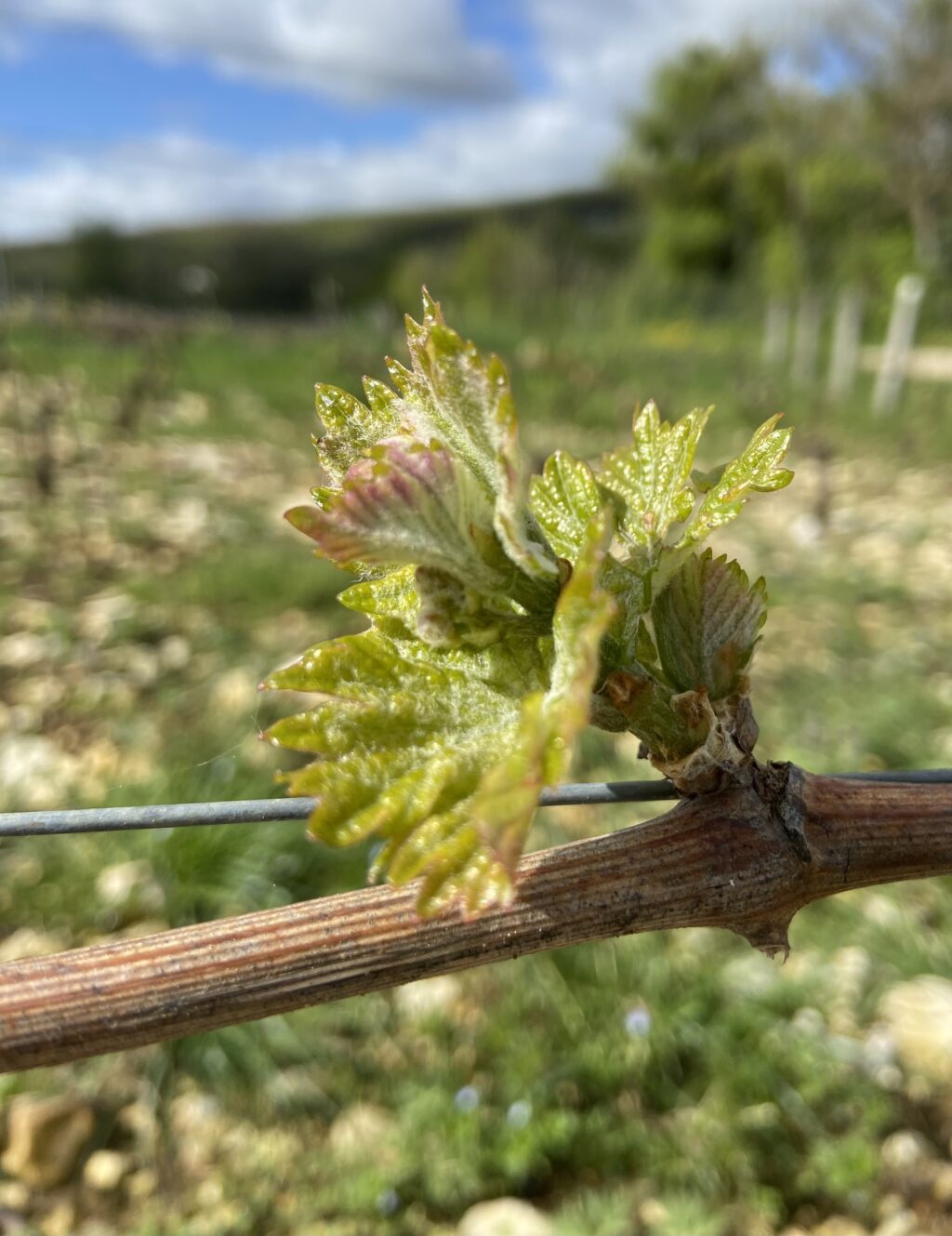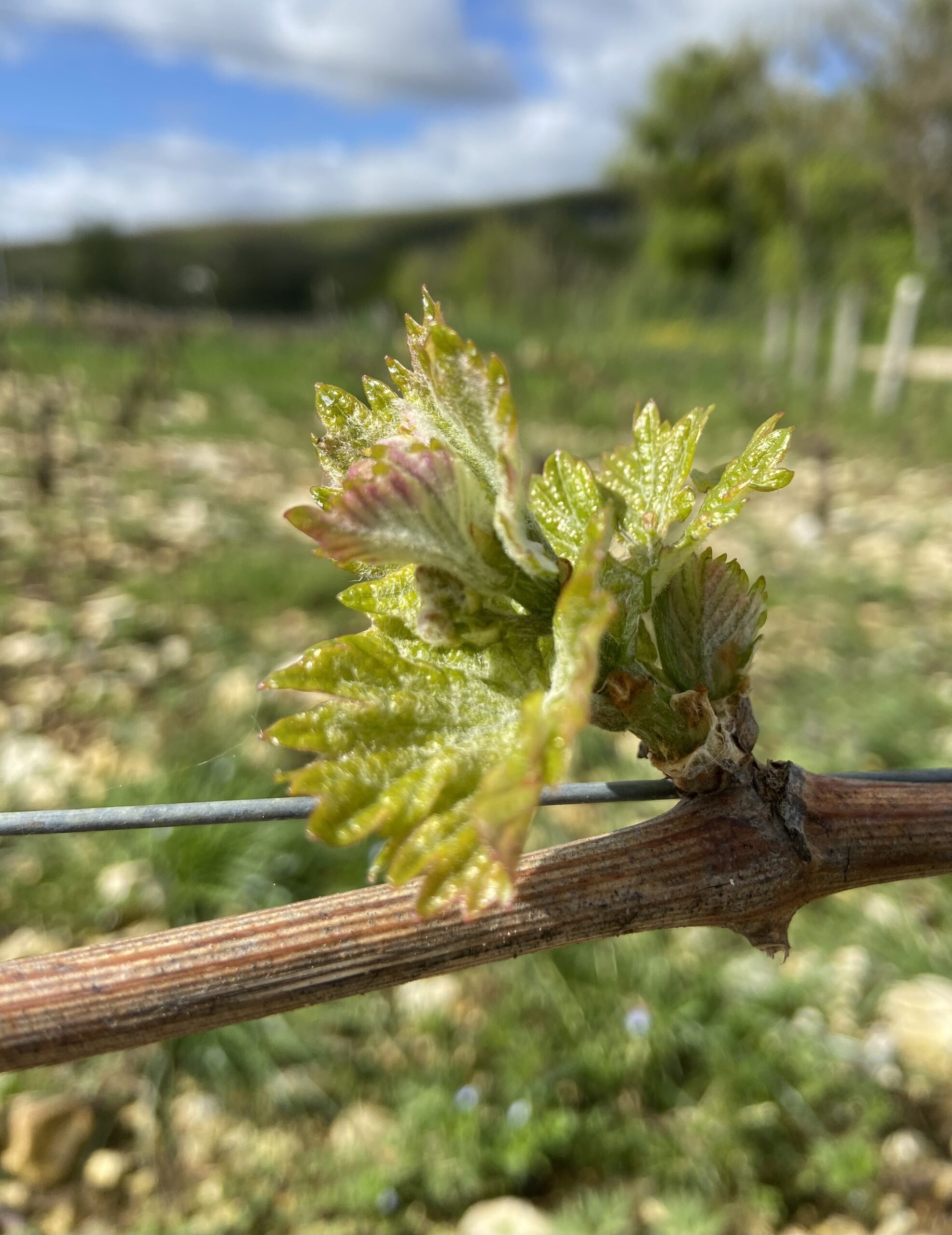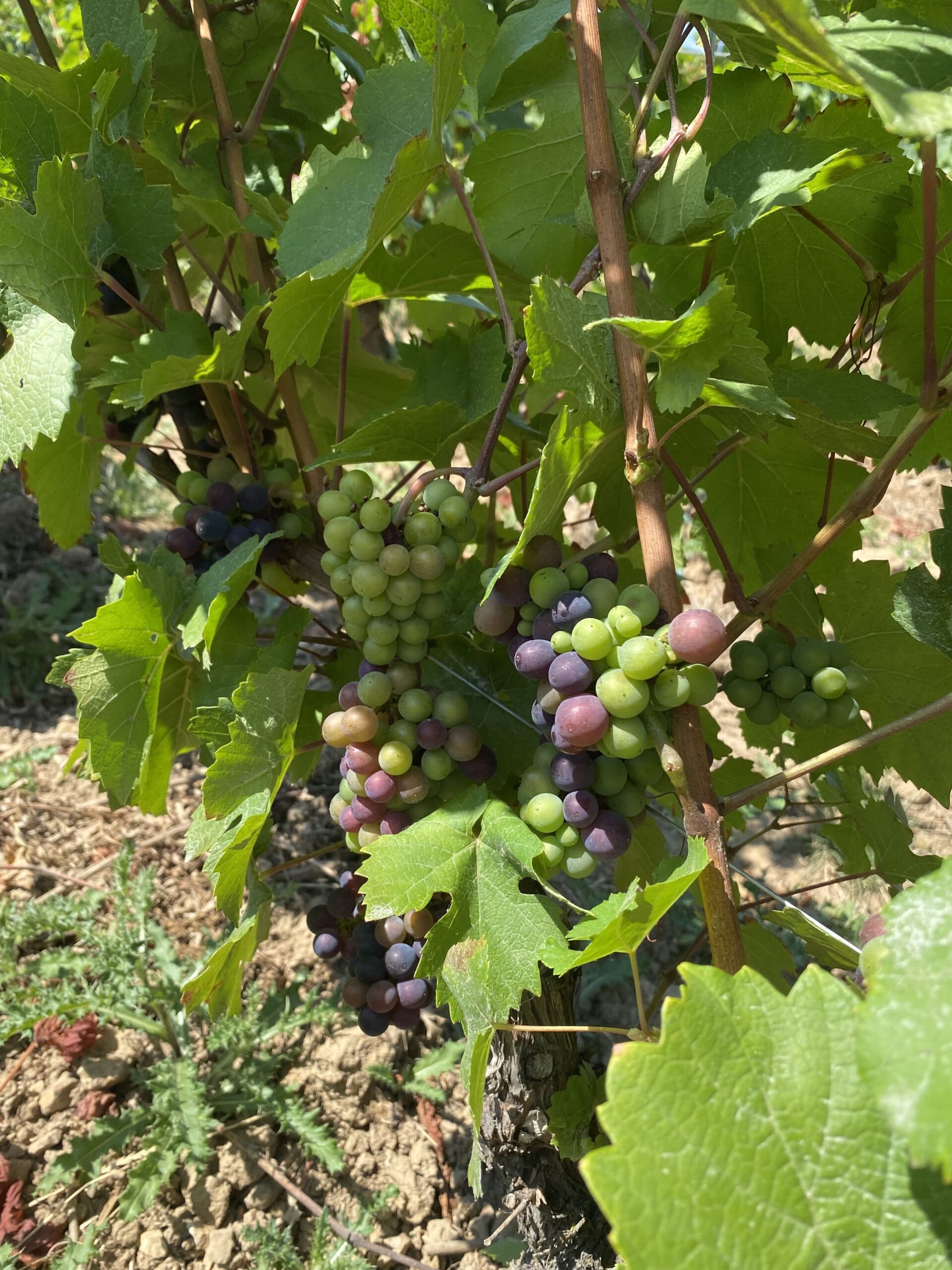
08.08.2024
HUSH, IT’S GROWING! ZOOM IN ON THE VINE CYCLE

To make good wine, most of the work is done in our beautiful vineyards. Here’s the vine cycle in a nutshell!
A cycle is immutable, destined to be renewed. The life of the vine is punctuated by the cycle of the seasons, but the vine follows its own growth calendar. We work in harmony with nature to follow this cycle and ensure that it runs smoothly, with the aim of obtaining the best possible harvest.
The vine’s cycle begins in spring, after its “dormant “spleeing” phase in winter. After working hard from March to September, the leaves fall off the vine in autumn, before it goes into dormancy and rests, before starting a new cycle. We take advantage of this period to prune the vines, using the simple or double guyot methods, or the short Royat cordon pruning. Pruning generally takes place from November to March.
The beginning of the vine cycle: the appearance of vegetation
In March, the vine wakes up, more or less gently depending on the weather conditions. As the vine is a climbing plant, we lower the “baguette”, the branch of vine chosen to host the future bunches, along the wire. This will allow the branches to spread vertically. At this stage, we can observe the phenomenon of the vine weeping: the sap flows through the pruning wounds. The milder the weather, the more sap begins to circulate actively, favouring the appearance of the first buds. The pace quickens in April, between the buds in the cotton and the first spreading leaves.
Another crucial stage: flowering. Yes, it’s an ephemeral period, but even vines make flowers! Flowering generally takes place in mid-June, after the leaves and inflorescences have grown beautifully in May. The flowers, which you can see for 7 to 10 days, give way to the future grape berries.

The development of the bunches
From June to September, the bunches go through different stages: fruit set and veraison. Setting simply means that the flowers turn into grape seeds, which grow from week to week until they form a cluster. Veraison takes place in mid-August, and is the vine’s final transformation. At this stage, the grape seeds, which are green to begin with – whatever the grape variety – take on their final colour. The berries lighten and become slightly translucent for Sauvignon Blanc, and take on their red/black colour for Pinot Noir.

To ensure the best possible growth of these bunches, and ultimately the best possible wine, we carry out a variety of green harvesting operations. In June, we can de-bud the vines: this eliminates any overgrown shoots and concentrates the vine’s energy on the main bunches.
In June and July, we also carry out the “accolages”, i.e. we pull up the wires that maintain the vegetation as it grows. At the same time, trimming is also very important, as it allows us to cut the leaves of the vines to avoid having overgrown vegetation and to concentrate the vine’s energy on the bunches rather than on the leaves.
During August, we leave the grapes to ripen in peace, regularly checking the health of the vineyard.
The end of the vegetative cycle
September, here you come! The grapes are ripening and we take frequent samples to determine the ideal time to harvest our beautiful bunches. The ban des vendanges, a prefectoral decree, marks the start of the harvest. We cannot start harvesting before this date; however, we choose the perfect time to pick the grapes depending on the plot and its terroir (exposure, soil type) and also on the grape variety (pinot noir is often earlier than sauvignon blanc).
Stay tuned in September for our focus on the 2024 vintage!
In the meantime, you’ll find all our vintages available for purchase in our online shop for France delivery only.
